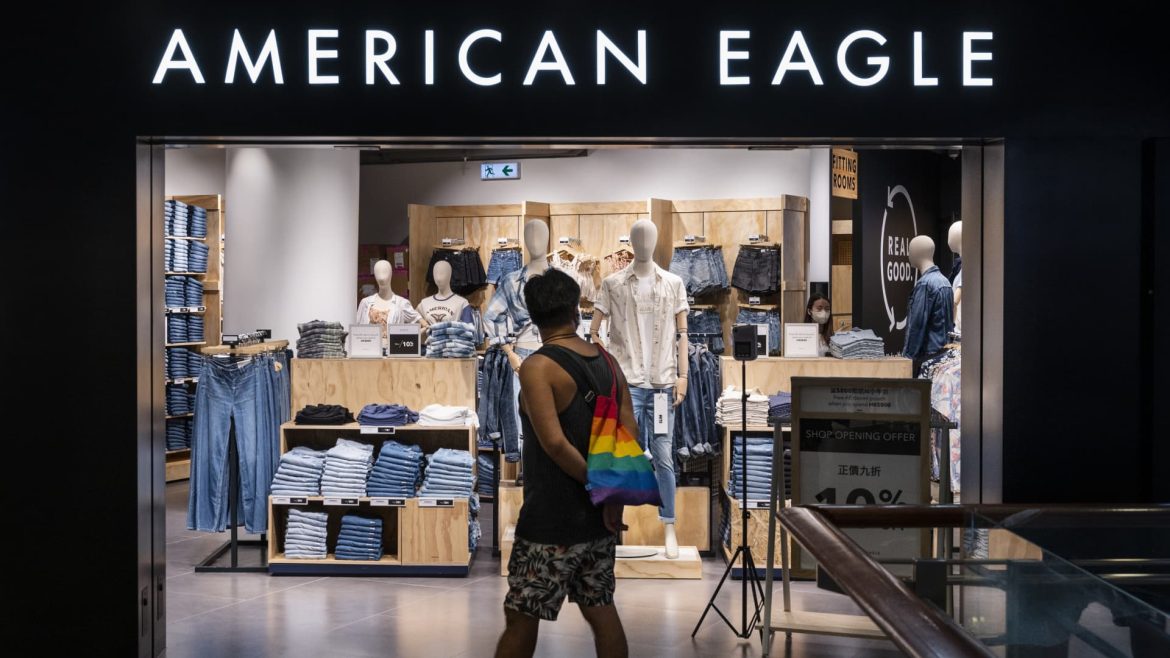American Eagle’s Recent Performance: A Landscape of Consumer Caution and Retail Challenges
American Eagle Outfitters (AEO) has recently faced a slew of sobering financial signals that underscore a broader theme: consumers are pulling back amid persistent inflation and economic uncertainty. The company’s trajectory through the most recent quarters reveals missed earnings expectations, increased inventory write-downs, withdrawn guidance, and falling comparable sales. This report analyzes the key developments, market reactions, and strategic implications for American Eagle and the retail sector more broadly.
Signs of a Slowing Consumer
Multiple reports indicate American Eagle has encountered a slowdown in consumer spending. The retailer’s commentary highlighted shoppers’ retrenchment as they grapple with ongoing inflation and concerns about tariffs. This behavioral shift is reflected in a 3% decline in comparable sales and a 5% year-over-year decrease in total revenue, which recently fell to approximately $1.1 billion for the quarter.
The shift toward value-seeking buying patterns and selective purchasing during peak shopping moments has contributed to the retailer’s cautious outlook. The softness in discretionary spending on apparel, a non-essential category, underscores consumers’ prioritization of essentials under financial strain.
Earnings Misses and Inventory Challenges
American Eagle’s latest earnings reports have consistently fallen short of analyst expectations. The company experienced significant profit pressures driven by a $75 million write-down of spring and summer merchandise, signaling excess inventory that must be discounted or cleared. This write-down is tied to misaligned merchandising strategies and promotional escalations, which exacerbated inventory risks. Inventory levels increased substantially, up 36% to $687 million, suggesting an overstock relative to current demand.
Such inventory surpluses not only depress margins through markdowns but also constrain cash flow and operational flexibility, necessitating careful adjustments to merchandise planning and procurement for future quarters.
Withdrawal of Fiscal Guidance and Market Reaction
In light of these challenges, American Eagle withdrew its full-year fiscal 2025 guidance, citing “macro uncertainty” and ongoing reviews of forward plans after disappointing first-quarter results. This move signals management’s prudence in avoiding overly optimistic projections amid volatile market conditions and a shifting consumer landscape.
The reaction from investors has been swift and severe: shares have plunged sharply multiple times, experiencing drops of 7%, 13%, and even 17% following earnings announcements and guidance withdrawals. Some analysts and institutions, including Morgan Stanley and JPMorgan, have downgraded price targets and forecasts amid growing concern over American Eagle’s near-term prospects and profitability.
Competitive and Sector-wide Context
American Eagle’s struggles resonate across the retail apparel sector. Similar themes of inventory glut, consumer caution, and tariff-related cost pressures are echoed by peers like Gap and Abercrombie & Fitch, which have also tempered their expectations for sales growth.
Apparel retailers face the dual challenge of balancing inventory to meet uncertain demand while managing rising input costs and a complicated tariff landscape — factors that squeeze margins and heighten operational complexity.
Strategic Considerations Moving Forward
To navigate this difficult terrain, American Eagle will need to intensify efforts to align inventory with external demand signals aggressively while refining merchandising and promotional tactics. Optimizing product assortment and pricing strategies will be critical as consumers remain selective and value-focused. Additionally, the company’s decision to pull guidance and recalibrate plans reflects a strategic emphasis on flexibility and risk management.
Investments in data analytics and supply chain agility may provide a competitive edge in reacting swiftly to real-time market changes. Maintaining consumer engagement through brand differentiation and targeted marketing could also help stabilize sales amid broader headwinds.
Conclusion: Navigating Uncertainty in a Tenuous Retail Environment
American Eagle’s recent financial results and market signals encapsulate the broader challenges facing retail in an inflationary and uncertain macroeconomic context. Declining sales, inventory burdens, and pulled guidance paint a picture of cautious consumers and a retailer adapting to rapid shifts.
The company’s path forward will hinge on its ability to recalibrate inventory strategies, sharpen merchandising execution, and maintain financial discipline while responding nimbly to evolving consumer behaviors. American Eagle’s experience serves as a case study in the complexities of managing consumer-facing businesses during times of economic transition, where agility and insight will separate winners from laggards.





